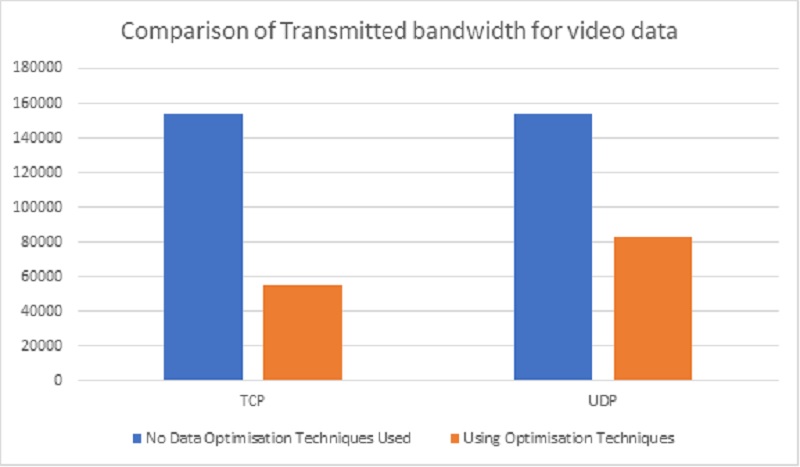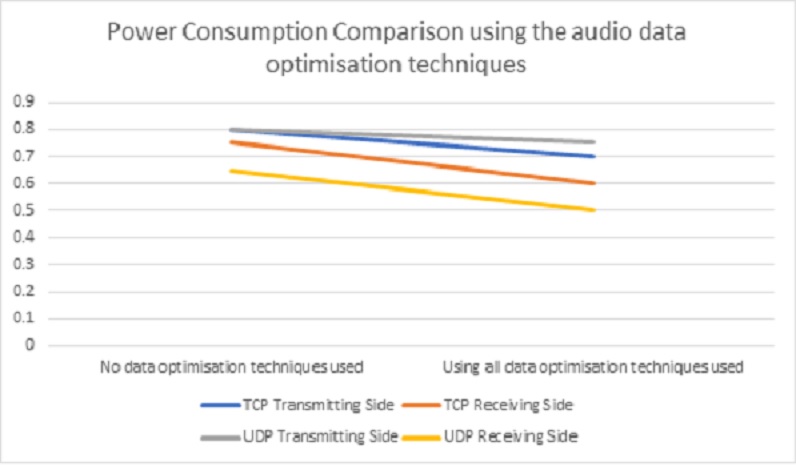This research concentrates on evaluating the effectiveness of data optimisation techniques when applied to Time Series Data generated by IoT devices. By 2030, it is estimated that around 125 billion devices will be connected to the Internet, [1] consequently increasing exponentially the amount of data transmitted. Three sample data formats were chosen, namely Video, Audio and Radar data. The nature of the data series was analysed for each format and optimisation techniques suitable for low power mobile IoT device use were proposed and evaluated. The optimisation algorithms were applied on common IoT devices, namely ESP32 MCUs and Raspberry Pi as development boards, while OV7670 Camera Sensors, MAX9814 Microphone Sensors, and Acconeer A111 Radar Sensors were used as data capture sensors.
This research concluded that industry standard data optimisation techniques such as MP3, JPEG and other processing and memory intensive algorithms are unsuitable for IoT use due to their demanding requirements. However, some of the main concepts behind them could be adapted to simpler and less demanding algorithms that work with the limited resources offered by IoT embedded platforms. Even though the proposed algorithms do not reach the compression ratios achieved by their industry standard counterparts, the bandwidth and hence power savings are considerable and this leads to a tangible improvement, especially in large scale IoT implementations.
TCP and UDP were chosen as the communication protocols in this research. When optimising Video Data, the proposed techniques for video data resulted in improving the data bandwidth reduction in TCP and UDP by 64% and 46% respectively as shown in Figure 1. These techniques also resulted in power consumption reduction of 19% on the transmitting side and 7% on the receiving side. Similarly, when optimising the audio data, the proposed data optimisation techniques resulted in a data efficiency gain of 38% in TCP while in UDP resulted 28%. Figure 2 displays the comparison of the audio optimisation techniques which reduced the power consumption by 9% on the transmission side and a 21% on the receiving side. When processing Radar Data, the optimisation technique resulted in 90% data efficiency improvement and reduced the power consumption by 5%.


References
[1] L. Ga-Won, S. Young-Rok, and H. Eui-Nam, DBS Asian Insights “Internet of Things- The Pillar of Artificial Intelligence,” no. June, pp. 16–17, 2013.
Student: Matthew Attard
Supervisor: Dr Joseph Vella
Co-Supervisor: Prof. Inġ. Victor Buttigieg
Course: B.Sc. IT (Hons.) Software Development
